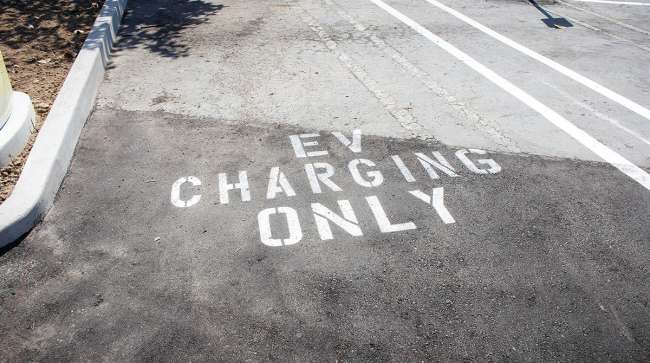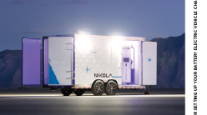Staff Reporter
Guide From AASHTO, Other Groups Helps States Develop EV Infrastructure

[Stay on top of transportation news: Get TTNews in your inbox.]
A short guide to help state agencies collaborate in creating electric vehicle infrastructure has been published by a group of key national transportation, electric utility and energy groups.
The federal government’s EV infrastructure program requires states to develop new vehicle infrastructure involving transportation, energy and the electricity grid.
The Federal Highway Administration approved state plans for fiscal years 2022 and 2023 to deploy EV charging infrastructure and 75,820 miles of EV charging corridors.
Jim Tymon, executive director of the American Association of State Highway and Transportation Officials, said the guide is beneficial to state departments of transportation and other agencies since it offers helpful examples of cross-agency collaborations.
AASHTO prepared the guide along with the National Association of State Energy Officials and the National Association of Regulatory Utility Commissioners (NARUC) Center for Partnerships & Innovation.

Tymon
“As state DOTs work to deploy these funds, they will need assistance and technical expertise from their counterparts at sister state agencies, like state energy offices and public utility commissions,” Tymon said.
Called “Mini Guide on Transportation Electrification: State-Level Roles and Collaboration Among Public Utility Commissions, State Energy Offices, and Departments of Transportation,” the 12-page publication outlines typical roles for state agencies and public utility commissions.
The objective of the guide is to increase collaboration among state agencies since they all have roles in establishing EV infrastructure — which requires states to modify their energy policies, upgrade transportation corridors, identify EV charging station locations and create electricity rates for EV charging.
Want more news? Listen to today's daily briefing above or go here for more info
“The publication of this mini guide is ideally timed for supporting the many states newly navigating the $7.5 billion National Electric Vehicle Infrastructure program that is supplemental to existing state and utility transportation electrification programs,” said Greg White, NARUC executive director.
Of the $7.5 billion total, $5 billion is funding for state DOTs to build a national EV charging network and $2.5 billion is allocated in discretionary grant funds that states, municipalities, tribes and metropolitan planning organizations can apply for to cover the costs of EV charging and alternative fuel infrastructure that is publicly accessible.
The federal government also has allocated $500 million in state energy program funds to put toward programs reducing transportation-sector greenhouse gas and increasing electrifying mass transit and state government vehicles as well as privately owned passenger vehicles and medium- and heavy-duty trucks.
At the same time, each state’s public utility commission is to consider amending rates to promote affordable and equitable EV charging, improve customer experience with EV charging, accelerate third-party investment in EV service equipment and recover marginal costs of electricity delivery to EV service equipment.
Available online at NARUC’s website, the guide contains excerpts from interviews with officials from Florida, Michigan and Utah who work in the DOT, energy office and public utility commission.
Among recommendations to state officials are:
- Identifying how specific roles each agency involved with EV infrastructure enables progress.
- Engaging in formal and informal collaboration to help agencies achieve their goals.
- Having discussions with public- and private-sector stakeholders to improve a state’s ability to benefit from transportation electrification.
David Terry, NASEO executive director, called the guide a great resource for state agencies as they collaborate to implement transportation electrification and various infrastructure programs.
The guide also encourages states that border each other to collaborate regionally, particularly on emergency scenarios involving EV infrastructure and economic development in the transportation sector.




